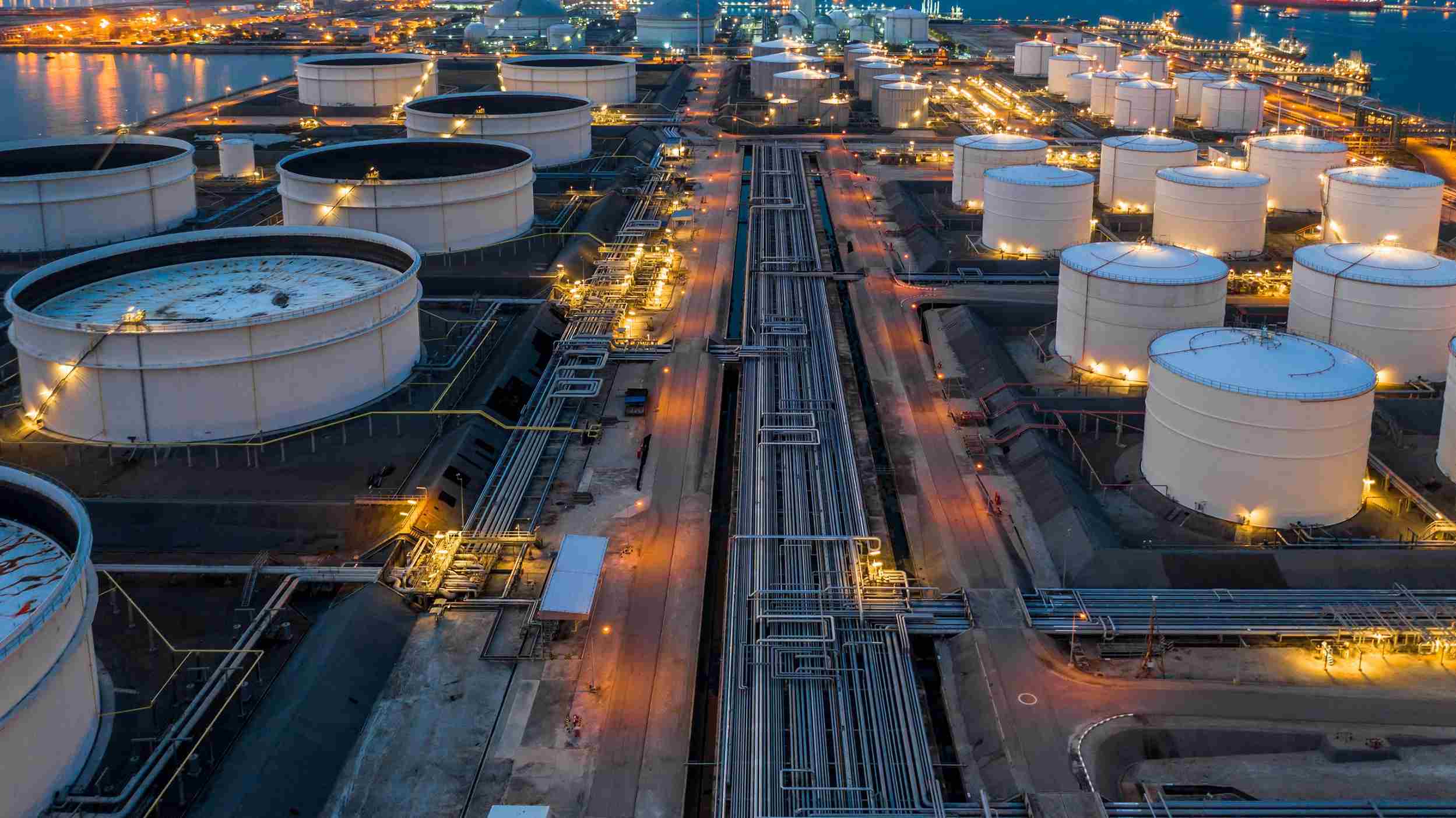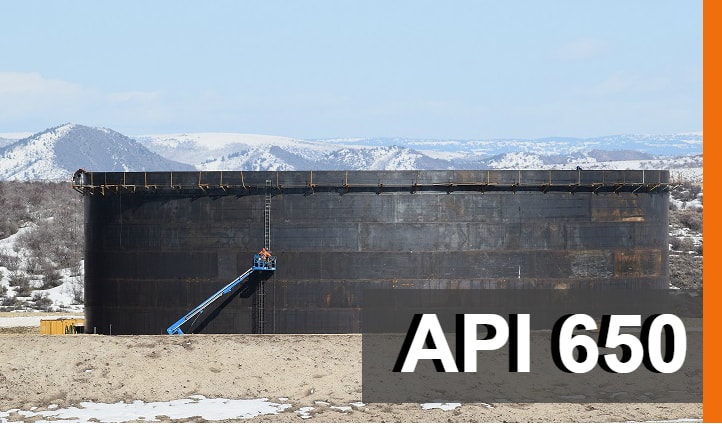Ensuring Compliance Through API 650 Welding Inspection Industry Standards
A Detailed Take A Look At the Installment Refine of Welding Assessment Techniques
Welding inspection is an essential process that assures structural integrity and security. The installation of examination strategies entails several methodical actions, each essential to accomplishing reputable outcomes. From planning and tool option to carrying out non-destructive and visual examinations, each stage demands mindful interest. Recognizing these procedures can significantly boost quality control in welding projects. What difficulties emerge in implementing these strategies, and exactly how can they be successfully resolved?
Understanding the Significance of Welding Examination
Welding evaluation is an essential component of guaranteeing structural stability and security in construction and manufacturing processes. This method includes assessing welded joints for flaws, guaranteeing that they satisfy details standards and policies. By systematically assessing weld top quality, assessors can recognize concerns such as cracks, spaces, and incomplete combination, which can jeopardize the strength and durability of structures.
The importance of welding assessment extends past immediate safety problems; it aids protect against pricey failings and possible threats in the long-term. Reliable assessment methods foster conformity with sector requirements, consequently improving the total reliability of welded components. On top of that, a durable examination procedure adds to preserving the credibility of home builders and makers, as it assures customers of the high quality of their tasks. Eventually, comprehending the importance of welding examination is important for promoting secure construction practices and making sure the longevity of vital facilities and items.
Choosing the Right Devices for Assessment
When selecting the proper devices for evaluation, it is vital to contemplate the certain needs of the welding process and the materials involved. Numerous inspection techniques, such as aesthetic, ultrasonic, and radiographic screening, necessitate distinctive tools tailored to their one-of-a-kind needs. For visual inspections, tools like amplifying calipers and glasses are vital for evaluating weld quality. Ultrasonic testing requires specialized devices capable of transferring and getting audio waves to detect inner imperfections. Radiographic testing, on the other hand, utilizes X-ray or gamma-ray sources along with delicate movie or electronic detectors to disclose inconsistencies.
Additionally, personal protective devices (PPE) is vital to ensure the safety of inspectors throughout evaluations. Selecting the right devices not only improves the accuracy of evaluations but also contributes to the general stability and security of the welding project. Consequently, a detailed understanding of available tools and their applications is vital for efficient welding evaluation.
Preparing for the Evaluation Process
Prior to starting the evaluation process, it is important to establish a thorough strategy that describes the scope and purposes of the analysis. This strategy ought to consist of certain standards that specify what comprises appropriate high quality in the welding work being checked. Determining the relevant codes and criteria is essential, as they will certainly direct the assessment criteria and techniques.
Additionally, employees included in the inspection needs to be sufficiently trained and certified in welding assessment techniques to ensure reliability and precision. A checklist can be beneficial in organizing the numerous aspects of the assessment, varying from devices preparedness to environmental conditions that can impact the assessment.

Finally, logistical factors to consider such as scheduling, offered resources, and interaction in between staff member must be resolved. By preparing systematically, examiners can improve the efficiency of the examination and make certain that all vital aspects are properly taken into consideration prior to proceeding with the inspection itself.
Conducting Visual Assessments

Performing aesthetic evaluations is an important step in the welding evaluation procedure, needing careful prep work to ensure effective analysis. Examiners must know with essential defect indications that can signify prospective concerns in weld high quality. By concentrating on these aspects, one can boost the general reliability of the assessment outcomes.
Planning For Visual Examination
Visual assessment functions as an essential primary step in the welding inspection procedure, assuring that any kind of possible flaws are identified early (API 650 Welding Inspection). Proper preparation is crucial for effective aesthetic inspection. Examiners should start by assessing relevant documents, including welding procedures and specifications, to understand the job needs. They have to collect required devices, such as amplifying glasses, flashlights, and ideal personal safety devices (PPE) An extensive assessment of the assessment area is vital; inspectors must verify it is free and clean of blockages. Additionally, it is vital to develop excellent illumination conditions to improve exposure of welds. By taking these primary actions, Get More Information inspectors can develop a setting for recognizing inconsistencies and assuring the integrity of the welded structures
Secret Issue Indicators
An extensive understanding of vital flaw indications is necessary during visual inspections to assure the top quality and safety of welded joints. Examiners must focus on details signs such as fractures, porosity, damages, and insufficient fusion. Fractures might look like sharp lines and can compromise structural honesty. Porosity manifests as little holes that can deteriorate weld toughness. Undercuts, which are grooves along the weld side, can result in anxiety focus. Insufficient combination suggests that the weld metal did not appropriately bond with the base material, resulting in a weak joint. By methodically recognizing these defects, examiners can ascertain compliance with industry criteria and improve the overall reliability of bonded frameworks, eventually contributing to safer functional conditions.
Implementing Non-Destructive Checking Strategies

Many non-destructive testing (NDT) techniques are important to assuring the honesty of bonded structures without compromising their capability. These approaches allow examiners to evaluate weld high quality and discover problems without triggering damage to the materials being evaluated. Common NDT techniques include ultrasonic screening, radiographic screening, magnetic fragment testing, and color penetrant testing. Each approach offers a details function, addressing various sorts of defects such as splits, porosity, or insufficient fusion.
Executing NDT methods needs an organized technique, starting with choosing the ideal approach based upon the materials and the nature of the weld. Training employees in these methods is important for accurate results. In addition, establishing clear procedures and standards warranties consistency throughout the assessment procedure. By incorporating NDT into the welding examination process, organizations can boost the reliability of their products while reducing potential dangers connected with architectural failings. This aggressive method ultimately adds to preserving safety and top quality criteria in bonded building and constructions.
Recording and Examining Examination Results
Efficient paperwork and analysis of inspection outcomes are crucial elements of the welding inspection process. Precise records of inspection findings function as a recommendation for quality control and compliance with industry criteria. API 650 Welding Inspection. Assessors need to use organized forms or digital systems to log information such as the kind of weld, examination approaches used, and any kind of inconsistencies recognized during the assessment
Extensive analysis is important when information is collected. This includes comparing results against established criteria to determine patterns or persisting problems. Statistical tools may be utilized to evaluate flaws and examine their influence on overall weld high quality.
Additionally, reliable communication of findings to relevant stakeholders is important. Records and recaps ought to be succinct and clear, highlighting crucial insights and referrals for restorative activities. By methodically documenting and assessing examination outcomes, organizations can promote continual improvement in welding practices and improve product honesty.
Often Asked Questions
What Credentials Are Needed to End Up Being a Welding Examiner?
To become a welding examiner, one typically requires appropriate accreditations such as AWS CWI, along with experience in welding techniques, expertise of welding codes, and proficiency in evaluation methods to assure quality and security standards.
Exactly How Commonly Should Welding Inspections Be Carried Out?
Welding inspections should be conducted consistently, commonly after each weld is finished, and regularly during tasks. Variables such as project intricacy, industry requirements, and governing demands can influence the frequency of these inspections.
What Is the Cost of Welding Examination Providers?
The price of welding assessment solutions differs substantially based upon factors such as task intricacy, dimension, and place. Generally, prices vary from my latest blog post $100 to $150 per hour, with additional fees for specialized screening and useful source accreditations.
Are There Certifications for Welding Inspectors?
Yes, there are numerous accreditations for welding assessors, consisting of those provided by the American Welding Culture (AWS) and the International Institute of Welding (IIW) These certifications guarantee examiners have the needed skills and expertise for efficient assessments.

How Do I Pick an Assessment Provider?
To select an inspection company, one ought to assess credentials, experience, market online reputation, and consumer testimonials. Furthermore, comparing service offerings and rates can aid ensure the selected copyright satisfies certain task requires successfully.
In addition, personnel included in the inspection has to be effectively trained and licensed in welding assessment strategies to guarantee integrity and precision. Carrying out visual assessments is a vital step in the welding inspection procedure, requiring cautious preparation to guarantee efficient analysis. Aesthetic assessment serves as a critical very first step in the welding examination procedure, assuring that any type of prospective issues are determined early. Effective paperwork and evaluation of assessment results are important elements of the welding examination process. Welding assessments need to be carried out routinely, generally after each weld is completed, and regularly throughout tasks.